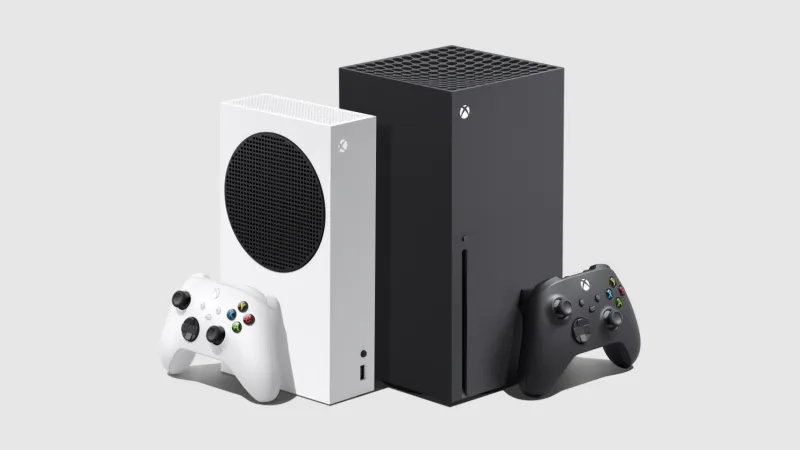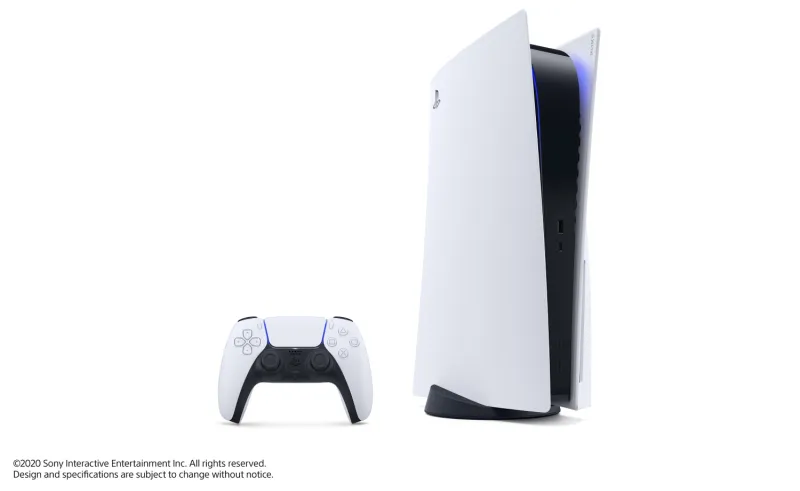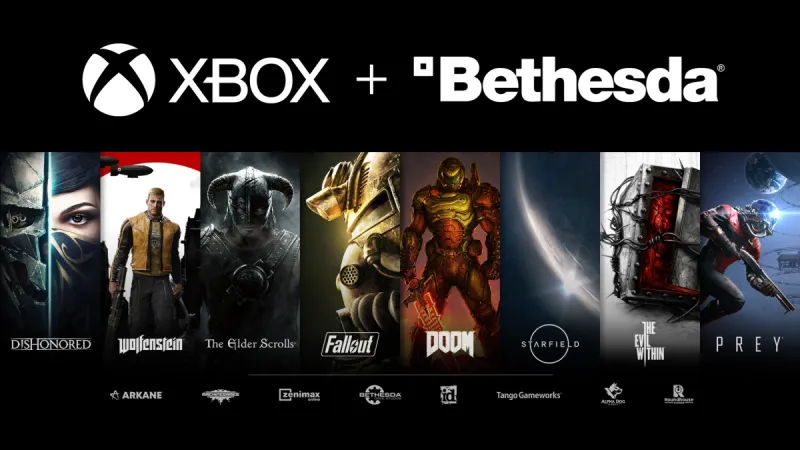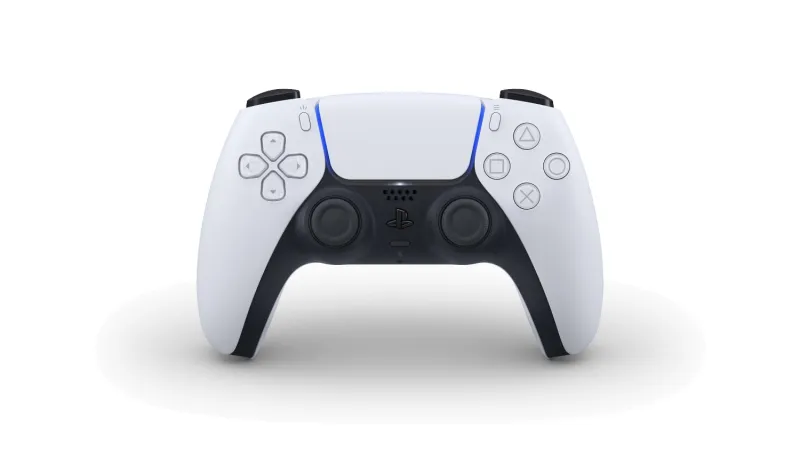
The launch of new consoles is always exciting. Not only does new hardware feel great to connect to your TV for the first time, but it also unlocks the potential for the games we'll collectively experience over the next several years. With the new hardware just over the horizon, I reached out to both PlayStation and Xbox to hear their cases for why upgrading to next-gen hardware is worth the investment.
For many, when the PlayStation 5 and Xbox Series X/S release the second week of November, it will mark the dawn of a new era of gaming. However, plenty of others will be sticking with their existing systems for various reasons. With so few next-gen exclusive titles across the two platforms, many are content to hold off on upgrading. Xbox has said that its first-party titles will continue to release on both Xbox Series X/S and Xbox One in the near future, and on the PlayStation side, big titles like Marvel's Spider-Man: Miles Morales and Horizon Forbidden West have been confirmed to release on PlayStation 4 as well.
Since you can play these games on your PlayStation 4 and Xbox One, is there really reason to upgrade? According to both PlayStation and Xbox, the community comes first when deciding to let players enjoy the big near-future games on current-gen hardware, but the best experiences will inevitably come on the newer consoles. "The PS4 community is incredibly important to us, and will be for many years to come," says PlayStation senior vice president of platform planning & management Hideaki Nishino. "That being said, with PlayStation 5 we’re delivering a truly next-generation experience to you that offers innovation when it comes to gameplay, immersion, visual fidelity, and storytelling."
Similarly, Xbox is focused on continuing support for Xbox One, but with an eye toward the future. "If you, as a player, are entirely happy with your Xbox One X experience and you want to continue to stay there, we're completely happy for you to do that," says Xbox director of program management Jason Ronald. "But at the same time, with Xbox Series X, it was critically important for us to build our fastest, most powerful console ever, and really provide that transformative, next-generation gaming experience. And with Xbox Series S, our goal was to provide the exact same great gaming experience, just in the smallest, most affordable next-gen console."

The two-console approach is a unique way to begin the generation. While the two PlayStation 5 models are nearly identical aside from one not featuring a physical media drive, the Xbox Series X and S deliver more variance in both features and price. The PlayStation 5 models sell for $499 and $399, while the Xbox Series X and Series S have respective $499 and $299 price tags. However, unlike the cheaper (and disc-free) PS5, the Xbox Series S features less processing power and is unable to deliver 4K resolution despite its designation as a next-gen console.
For those who went all-in on this generation and picked up an Xbox One X, which has more TFLOPs of power than the Xbox Series S, is the move from an Xbox One X to an Xbox Series S a true upgrade? Xbox believes so. "As we think about this next generation of technology, not only are we continuing to advance the graphics, which people traditionally think of as the defining feature of the next generation, but with this generation, where I think you'll see a lot of innovation is things like higher and more steady frame rates or frame rates well beyond what people traditionally associate with consoles, with support for up to 120 frames per second," says Ronald. "Then you also look at things like the addition of custom NVMe SSDs, and the Xbox velocity architecture where it was a radical rethinking and revolution of how a traditional I/O system works in a game console, and that means things like the virtual elimination of load times, things like Quick Resume ... how can we get you into the game faster than ever before? With the massive advances in CPU performance and I/O bandwidth, there's going to be a lot of transformative gaming experiences that you can't deliver on current-generation hardware, because a lot of times, those constraints were really limiting game design. Those were really focus areas for us as we designed both consoles, and the great part about it is the CPU performance and the I/O performance is identical between the two consoles."
The solid-state drives in both the PlayStation 5 and Xbox Series X/S are key to both severely cutting down on load times, but also delivering new kinds of experiences that are not possible on current-gen hardware. "PS5’s ultra-high speed SSD and integrated custom I/O system were developed with the goal of removing barriers to play – specially loading screens in games and the ability to 'fast travel' in between locations of a game world," says Nishino. "Developers are able to pull data from the SSD at an incredibly fast rate, which allows them to design games in completely new ways. We revealed a new extended gameplay demo of Ratchet & Clank: Rift Apart back in August, which showed the player being sent across different dimensions with near-instant speed. The SSD truly is a game-changer that allows developers to create experiences that are only achievable on PS5."

However, that doesn't mean only next-gen games benefit from the addition of the SSD. In fact, in my time playing backward compatible titles with the Xbox Series X, I noticed dramatic performance improvements, including load times cut to a fraction of their Xbox One X counterparts. Compatibility – in particular, making your existing library of games even better – was something that was central to Xbox's mission heading into this generation.
"It's an area we're fully committed to, and it was a key design decision in the earliest days of Xbox Series X and Series S," says Ronald. "Playing a game on these new consoles ... it just feels more responsive; it feels like the technology is getting out of my way and I'm just much more immersed in my games. Then you have things like improved CPU performance, so games will always run at their peak resolution and frame rates. You're going to see higher and more consistent frame rates, so if a title used to drop a frame occasionally and you'd see a momentary hitch, now it's just buttery smooth. [...] Then you also look at things like Auto HDR; that's a new platform capability that we've never had before. Earlier this year, we showed Fuzion Frenzy from original Xbox. That's a game that was written before HDR was even a concept, let alone 4K and HD graphics. Now we see that running with HDR applied, and it doesn't impact the frame rate, it doesn't impact the available memory that the title has. We're really focused on how do we give you the best version of the game that the hardware is actually able to deliver."
Xbox's compatibility focus also applies to its peripherals, with all controllers and accessories also carrying forward. With the Xbox placing such a keen emphasis on compatibility of past titles and accessories, will the team be expanding its library of backward compatible titles from Xbox 360 and the original Xbox? "It's definitely something that we're looking into, and I'll say 'Never say never,'" says Ronald. "But I will also say some of these games were designed before the idea of generational compatibility came into play. So, in some cases, we've run into some technical challenges, and in other cases, there's licensing challenges and whatnot. So, the team's definitely looking into it. I can't commit to anything here, but it's definitely something top of mind for us and something that we are investigating."
For PlayStation, the focus remains on looking ahead toward new experiences more so than backward compatibility. Still, most of your existing PlayStation 4 library will work on PS5 from day one. "We know our fans have invested a lot of time building their collection of PS4 games, so library portability is critically important," says Nishino. "When you sign in to PS5 with your account, you will automatically see your library of played PS4 content through the menu. Approximately 99 percent of the thousands of PS4 titles, both catalog and newly published, will be playable on PS5, and we’re excited about supporting our PlayStation community as they transition from PS4 to PS5 when they’re ready."

On top of that, PlayStation also announced the PlayStation Plus Collection, which adds digital copies of nearly 20 PS4 classics including Uncharted 4: A Thief's End, The Last Guardian, God of War, and more to PlayStation Plus subscribers' libraries at no additional charge. PlayStation has also dominated the current generation when it comes to exclusive titles thanks to an incredible lineup of first-party studios like Insomniac Games, Sucker Punch Productions, Naughty Dog, and more – a trend PlayStation hopes to capitalize on and carry forward into the next generation.
"Our creators at SIE Worldwide Studios take pride in challenging themselves to delight PlayStation fans with new experiences that push past player expectations for what games can be – that will only continue on PS5," Nishino says. "The lineup of exclusive games from Worldwide Studios at launch and beyond is by far the strongest that we’ve ever had on a new console. Launching PS5 with games like Marvel’s Spider-Man and Demon’s Souls is just the beginning. Fans can look forward to Gran Turismo 7, Horizon Forbidden West, Ratchet & Clank: Rift Apart, and more, as well as the new God of War title we teased in our September event. Exclusivity is a key differentiator for us, but we also believe quality of games is an even more important criteria. And when we look at Worldwide Studios, the quality of their work really shines through in each individual game, and I think that’s what speaks most to our fans as well."
Xbox recognized its weakness in this regard, so midway through the Xbox One generation, the team began acquiring several studios. Over the course of a few years, renowned studios like Ninja Theory, Obsidian Entertainment, and Double Fine joined the likes of 343 Studios, The Coalition, and Rare under the Xbox Game Studios banner. "As somebody who's been at Xbox over the last 15 years, I've never been more excited about our first-party capabilities that we have as we go into this generation," says Ronald. "We've significantly increased the number of first-party studios, but we've also increased the diversity. You look at the acquisition of studios like Obsidian or InXile, and then you also look at studios like Double Fine or Compulsion Games, you know that not only is it about the quantity and the quality, but it's also about the diversity. We really want to make sure we have great content for players of all types."

However, the biggest acquisition came in September of this year, when Microsoft acquired ZeniMax Media, including its subsidiaries like Bethesda, id Software, Arkane Studios, and more. "The value they provide us is almost immeasurable," says Ronald. "When you look at the pedigree and the long history they have with so many iconic franchises like Fallout, Doom, and Dishonored, but also their leadership and their innovation – some of the technical innovation they've done over many many years. Our partnership with both our first-party studios and third-party studios are critical to us; when we design these consoles, we really design them with our development partners."
Xbox opted to largely keep its controller the same (aside from a new hybrid-style d-pad, Share button, and better grips on the handles and triggers), but PlayStation went back to the drawing board completely, ditching the DualShock nomenclature that has been around since the PlayStation 1 era in favor of DualSense. The goal with this revamped design is to deliver a new level of immersion to players thanks to haptic feedback in both the controller and triggers, as well as adaptive triggers that allow developers to program them to have different tension to replicate the feeling of trying to stop in a car with anti-lock brakes, or pulling back on a tight bowstring.

"Based on our discussions with game developers, we knew that the sense of touch within gameplay hasn’t been a big focus for many games in past generations," says Nishino. "Our goal with DualSense is to give gamers the feeling of being transported into the game world, and we want gamers to feel like the controller is an extension of themselves when they’re playing. DualSense marks a radical departure from our previous controllers and captures just how strongly we feel about making a generational leap with PS5."
Regardless of when you plan to upgrade or which system (or systems) you choose, new hardware and new initiatives mean limitless potential for what we can expect. With both companies emphasizing sweeping improvements on the player-experience side in addition to the normal bells and whistles we typically see in the next generation of console technology, there's ample reason to be excited for the new hardware and the untold joy they will bring us over the next several years.
For an early look at how the new hardware improves the player experience, check out our hands-on look at the speed of the Xbox Series X here.
https://ift.tt/3d7TIJL